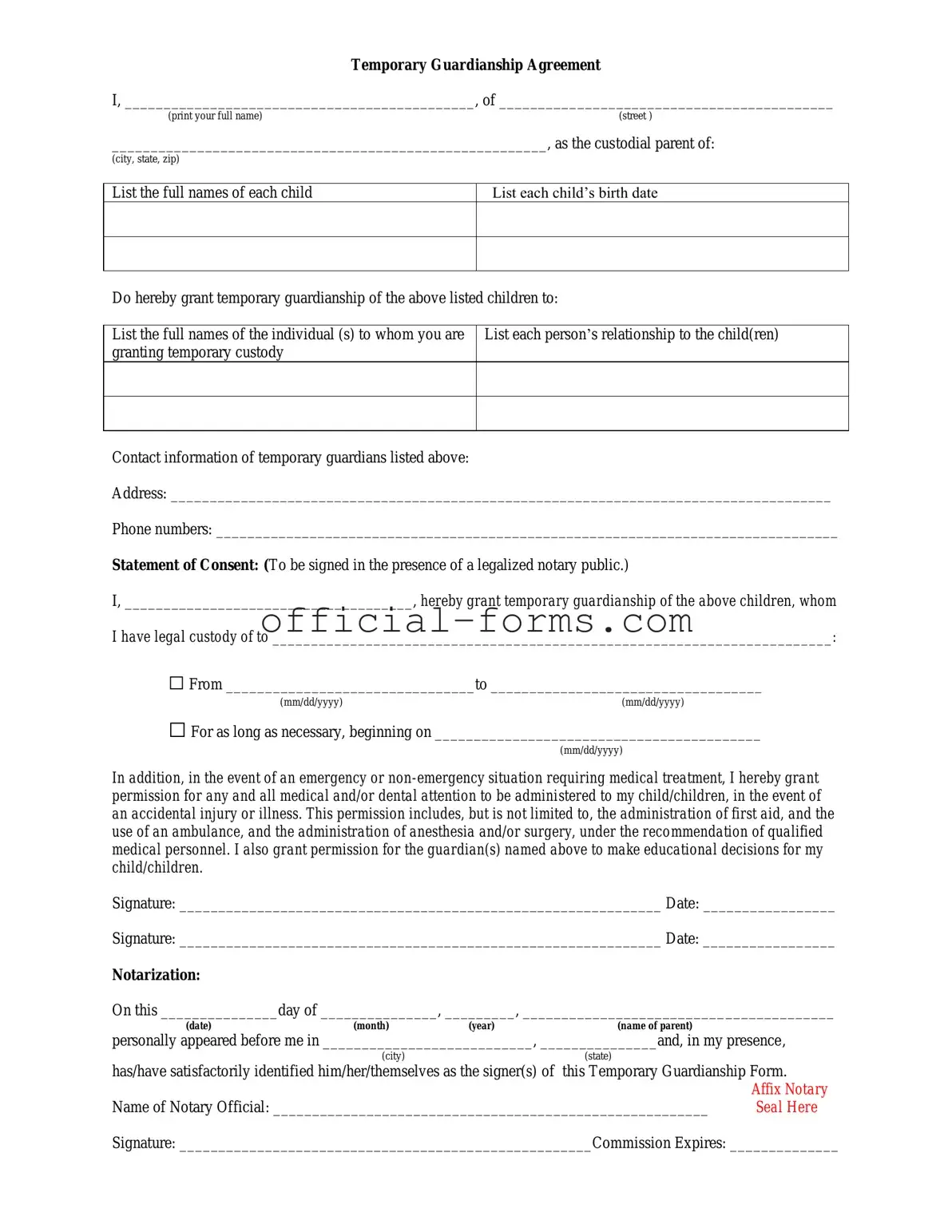Temporary custody arrangements play a crucial role in ensuring the well-being of children when circumstances require a shift in their living situation. This form serves as a vital tool for parents, guardians, and caregivers who find themselves needing to establish a temporary custody agreement. It addresses essential elements such as the duration of custody, the responsibilities of each party involved, and the rights of the child. Additionally, the form often includes provisions for visitation rights, ensuring that relationships with both parents and extended family members can be maintained. By clearly outlining expectations and responsibilities, the Temporary Custody form aims to provide a structured approach that prioritizes the child's best interests while accommodating the needs of the adults involved. Understanding the intricacies of this form is essential for anyone navigating the complexities of temporary custody, as it not only impacts immediate arrangements but also sets the groundwork for future decisions regarding the child's care and upbringing.
